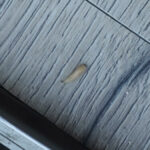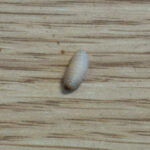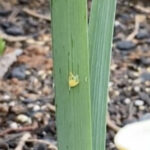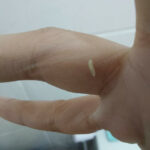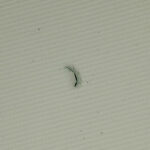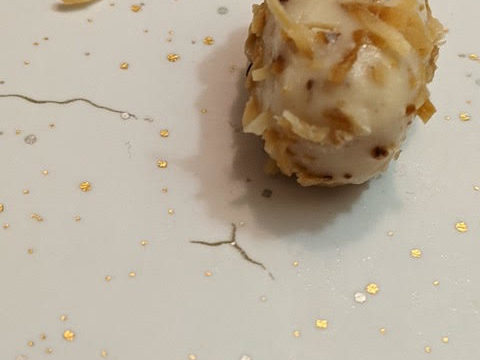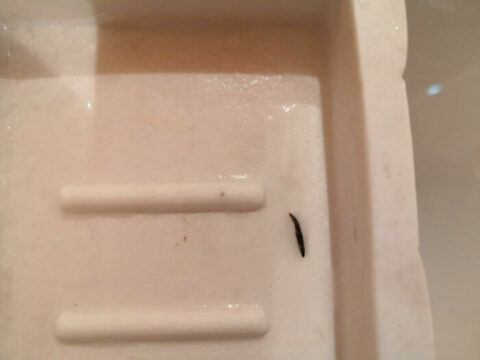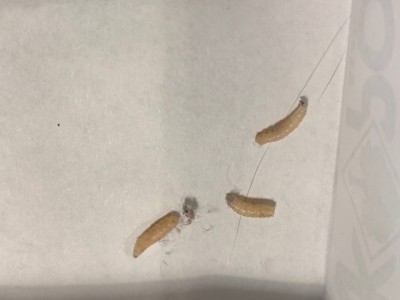
“Can you please identify whatever it is that these things are?” asks this reader about whatever unphotographed “things” he is referring to in his query. He was told by an exterminator that the “things” are Indian meal moth larvae, but nothing he does seems to help in getting rid of them.
Now, without any photographs of the creatures (one below being from a past article), we cannot hope to identify them ourselves, especially without any physical descriptions either. For that reason, we are going to trust the identification given to our reader by the exterminator and say that these are indeed Indian meal moth larvae. If that is the case, then there are several things our reader can do to get rid of them. As our reader did not mention what methods he had already attempted that did not work, our reader should take into account that we run the risk of suggesting things he has already tried.

Either way, the main thing our reader is going to want to do is make sure there are no crumbs, spilled food or other organic debris around the home that have been left there to rot; this can easily attract Indian meal moths, who lay their eggs on any viable food that their larvae could eat. Our reader should look inside and underneath kitchen cabinets, under sofa cushions and under the sofa itself, behind kitchen appliances, and anywhere else where food has been consumed and could thus have been spilled. Likewise, our reader should check all of his grain-based products, as it is these foods that attract the Indianmeal moth larvae the most. Infested foods will have obvious signs of contamination, and any such products should be thrown out immediately, and when we say “thrown out”, we mean out in the bins on the street. Do not throw them out and keep the infested trash inside the home, as the infestation is then free to continue inside the trash can, and eventually will just spread back out to the rest of the home.
Furthermore, if our reader has been trying to control the infestations but the larvae just keep on coming, it is likely because our reader has not eliminated the source of the infestation. There is probably some long-neglected cereal, rice or other grain sitting in his pantry that is chock-full of these larvae, who are happily eating away and potentially using this spot as a breeding site. Naturally, they can only breed once they have reached peak maturity at their moth stage, so our reader should also be on the lookout for any tiny, two-toned, black and white moths. Additionally, what our reader can do to prevent more moths from laying eggs and prolonging the infestations is get some airtight containers for his grains to keep them in. Not only can Indian meal moth larvae be brought into the home on the products from the store (meaning they were already infested), but the packaging they come in is often not sufficient in keeping out Indian meal moths or their larvae. Storing grains in mason jars, for example, is a good way of preventing invasions. It should also be noted that dog food is not safe from these pests! If our reader wants to be extra careful (at least during this period of infestation), he can freeze any grain-based products that are brought into the home before putting them away in his pantry, as this will kill any larvae/eggs that might already be present. What may also be a good idea is freezing the already-infested products before throwing them away, as that will ensure the infestation cannot continue wherever the infested product ends up.
To conclude, we suppose that our reader really is dealing with Indian meal moth larvae. We hope that some of the methods of controlling the infestation that we listed are new to our reader, so he can apply them as soon as possible and get rid of these pests. Not only is having them in one’s home not pleasant, but foods infested by such creatures are not safe to eat, and it is a waste of food and money to have to throw out anything. If worst comes to worst and nothing that we listed works to control or eliminate the infestation, then we suggest that our reader simply get the exterminator to do the job themselves.
All About Worms is always free, always reader-supported. Your tips via CashApp, Venmo, or Paypal are appreciated! Receipts will come from ISIPP Publishing.
You might also find these guys interesting!




